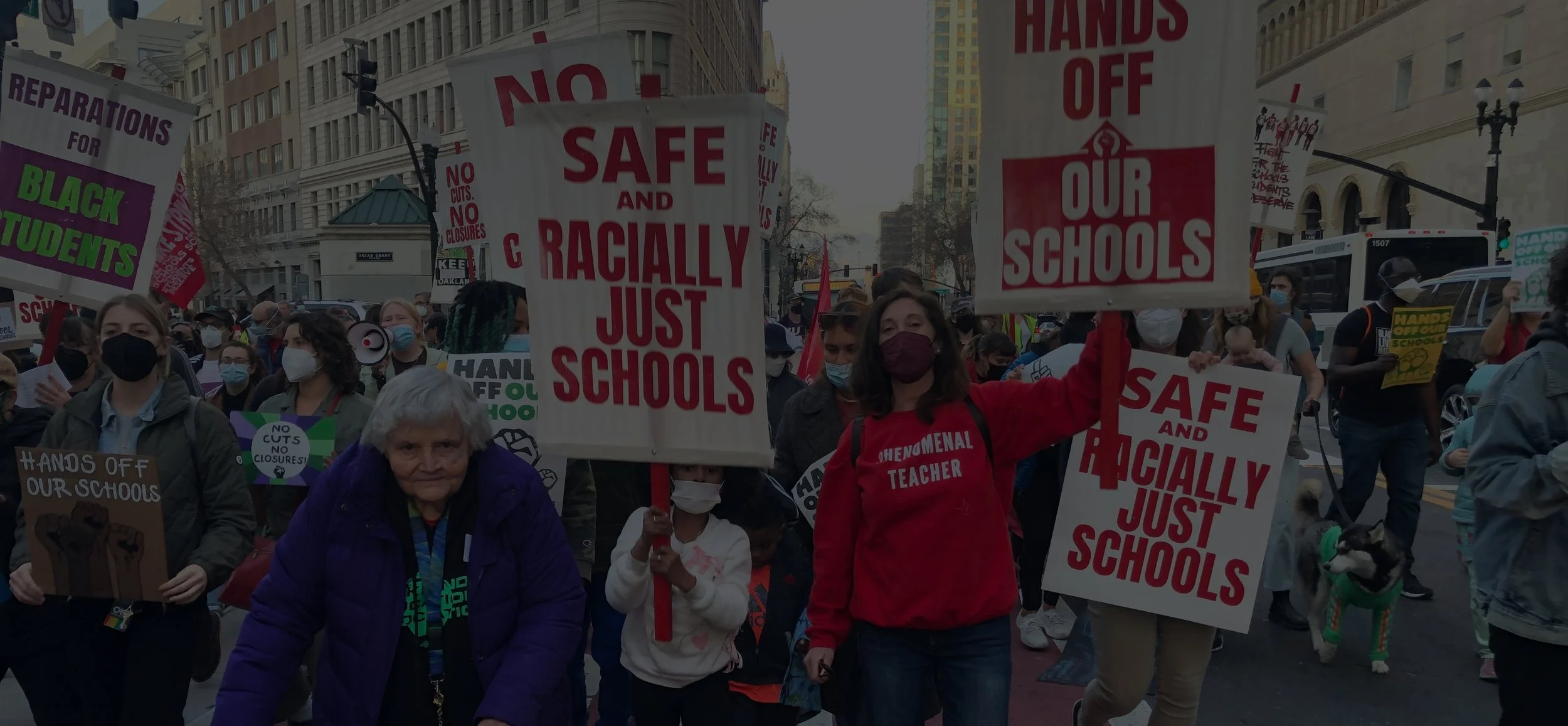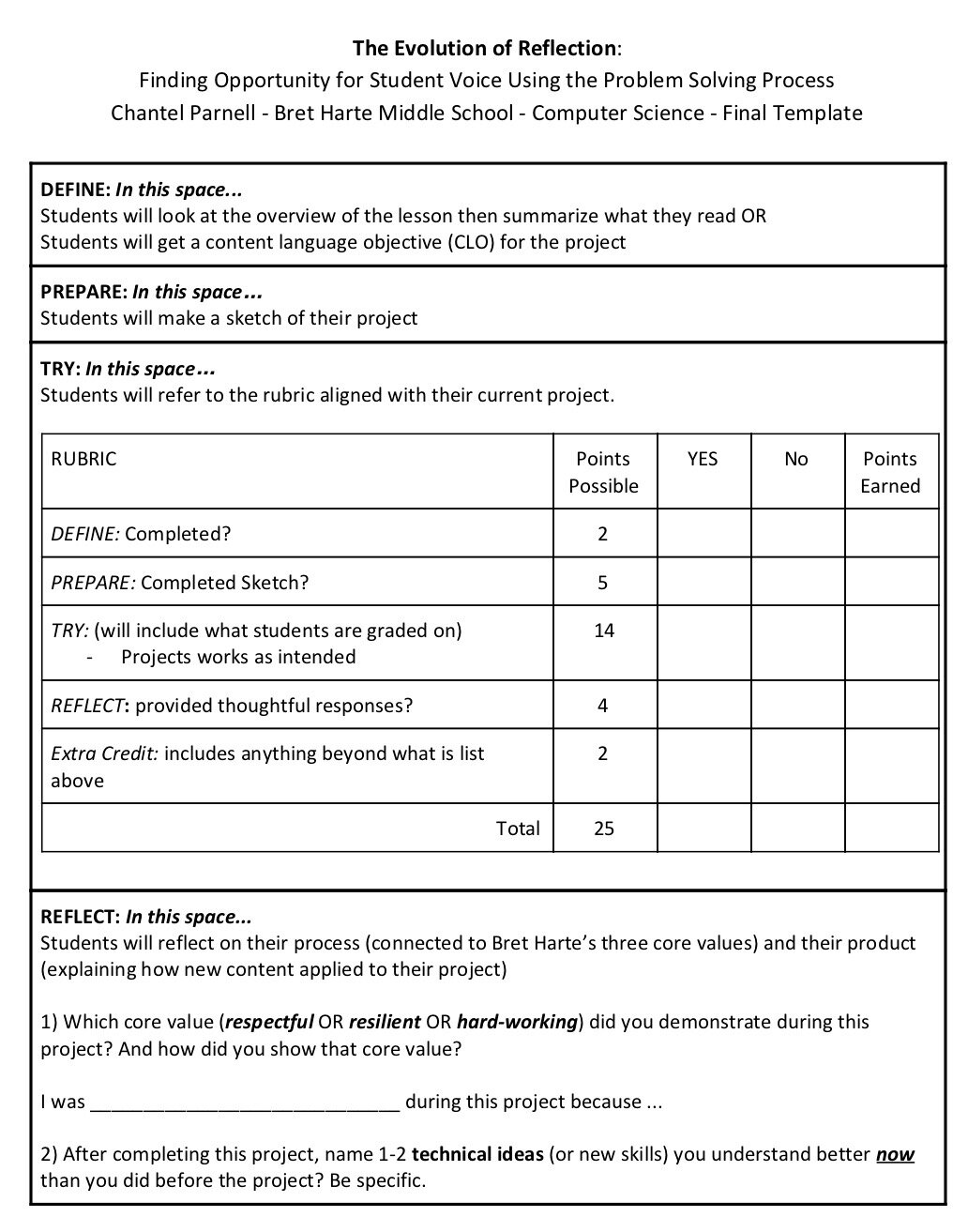At the end of the project they were supposed to revisit the rubric and grade themselves. In my mind I had identified four targets that I wanted students to focus on: Asking Questions, Effort, Supporting Others and Making a Plan, so instead of them revisiting their rubric, I created a Google Form that included the four targets, and language from what students had identified for each of the following categories: advanced, solid and needs work.
After looking at results of the Google Form I noticed that some students were putting in more effort to complete their projects, but some were still not getting their work done because they did not make a plan, ask enough questions, or seek help from their classmates or other resources. So I decided to unpack my original goal of having students value the process of creating over their final product a little bit more, by exploring the following inquiry question: “How can I find opportunities for student voice using the problem solving process?”
During the third unit on Games and Animations I began to tinker with the student handout. For each project, the student handout followed the same structure: DEFINE (our goal for the project), PREPARE (space for students to sketch their ideas), TRY (the code needed), REFLECT (various prompts) and some notes from the lesson on the back of the handout.
While I did notice students putting more effort into completing their sketches and trying to recreate their sketch into a digital design, I was not completely satisfied with their responses in the REFLECT section. And so it began, with every new project, students were getting a revised prompt in hopes that it would elicit the type of response I was looking for. My prompts included:
What type of advice would you share with a friend completing a similar project to make it easier for them?
What is one risk you are going to take in this unit?
As we define, plan, try and reflect on more projects, why do you think persistence is important?
After planning and creating in this unit, what are you most proud of?
What has been the most challenging part in Unit 3?
Describe a risk you took during this project.
In the last couple of projects for the unit, I stuck with the same prompt:
After completing this project, what type of technical advice would you share with a friend who was going to create a similar project, to make it easier for them? Think about the new code you learned in this lesson and explain how the new code works.
I landed on the prompt above after reminding myself that I wanted to focus on students being able to value the process of creating over their final product and to do that they should be able to articulate the new skills they learned, as well as identifying which mindsets enabled them to finish their projects. Before starting unit 4 and tinkering with the prompt yet again, I decided to ask students, “Why do you think there is a REFLECT section for each project we work on?” to see if my idea of why I have students REFLECT were aligned with what the students thought. Here are some of their responses:
“I think there is a REFLECT section for each project because we could see what we're proud with and what we might change in the future.”
“I think there is a REFLECT section for each project because it reminds the student of what they've learned and went over with the lesson/project.”
“I think there is a REFLECT section because Ms. Parnell can give examples for the next period so they know what to do”
“I think there is a REFLECT section for each project because it could give advice to other people and when you are struggling the teacher will know what you struggle with and they may be able to help you.”
After reading through all the students responses and looking back at the many iterations of the student handout, I realized that my students could articulate the purpose of the REFLECT section, but students were not giving detailed responses to the prompts because I had not really modeled what exemplar responses looked like.
I remember sitting in a meeting and hearing, “experiences shift mindsets, mindsets deepen experiences,” so it was not about tinkering with the tool, but about deepening students’ understanding of how to use the tool and reflect meaningfully. My students’ reflections helped me realize that I needed to create the space for them to practice what I was expecting from them and that in turn would improve how they engaged with each section of the student handout. As I start to think about next school year I believe I have a strong template that I can use to get students to value the process of creating over their final product and to reflect meaningfully by using the problem solving process. I also plan to devote time to allow for co-creations of exemplar responses for each section of the handout to ensure that students shift from a “jump right in without a plan” mindset to a “design thinking” mindset.




















